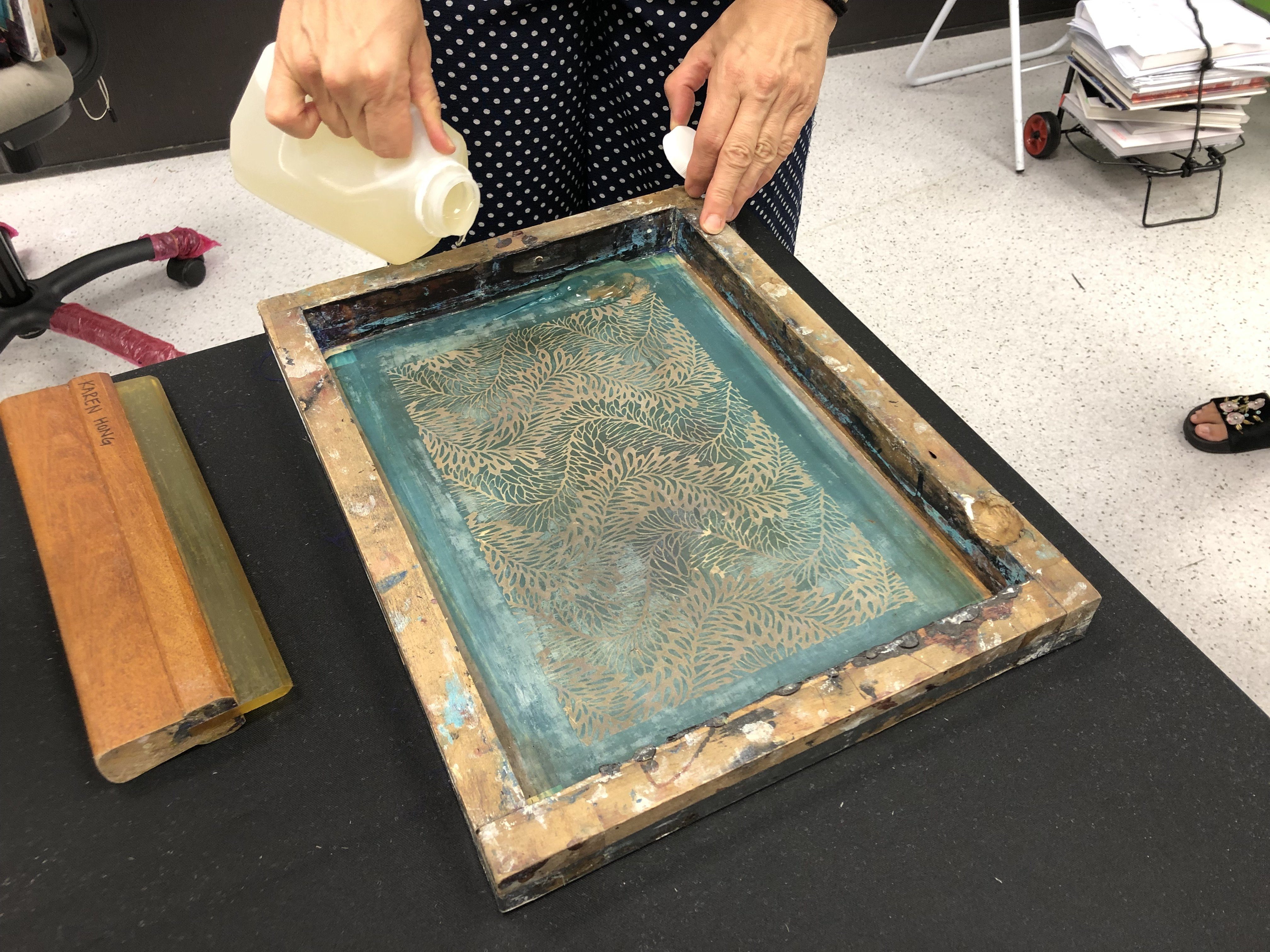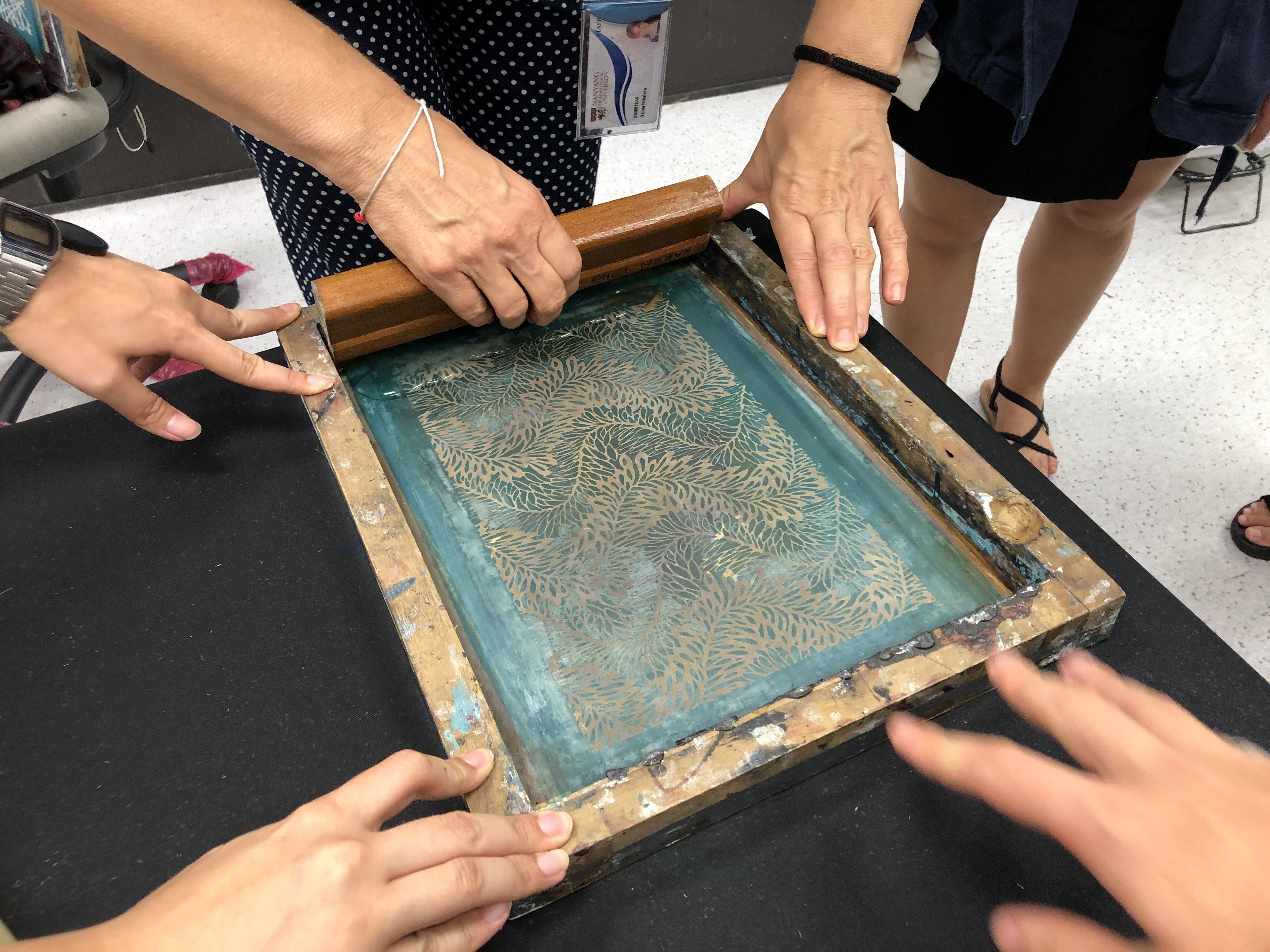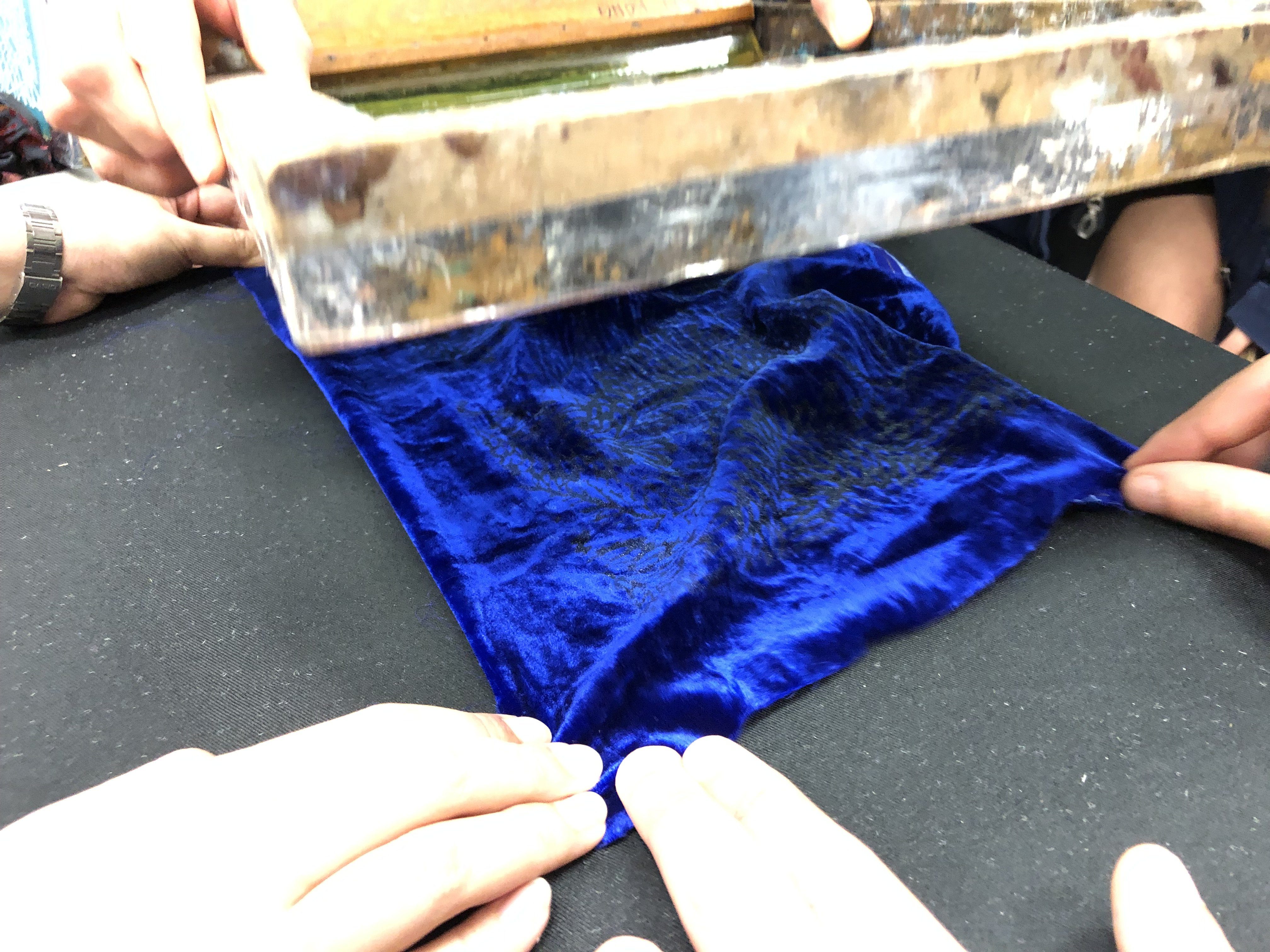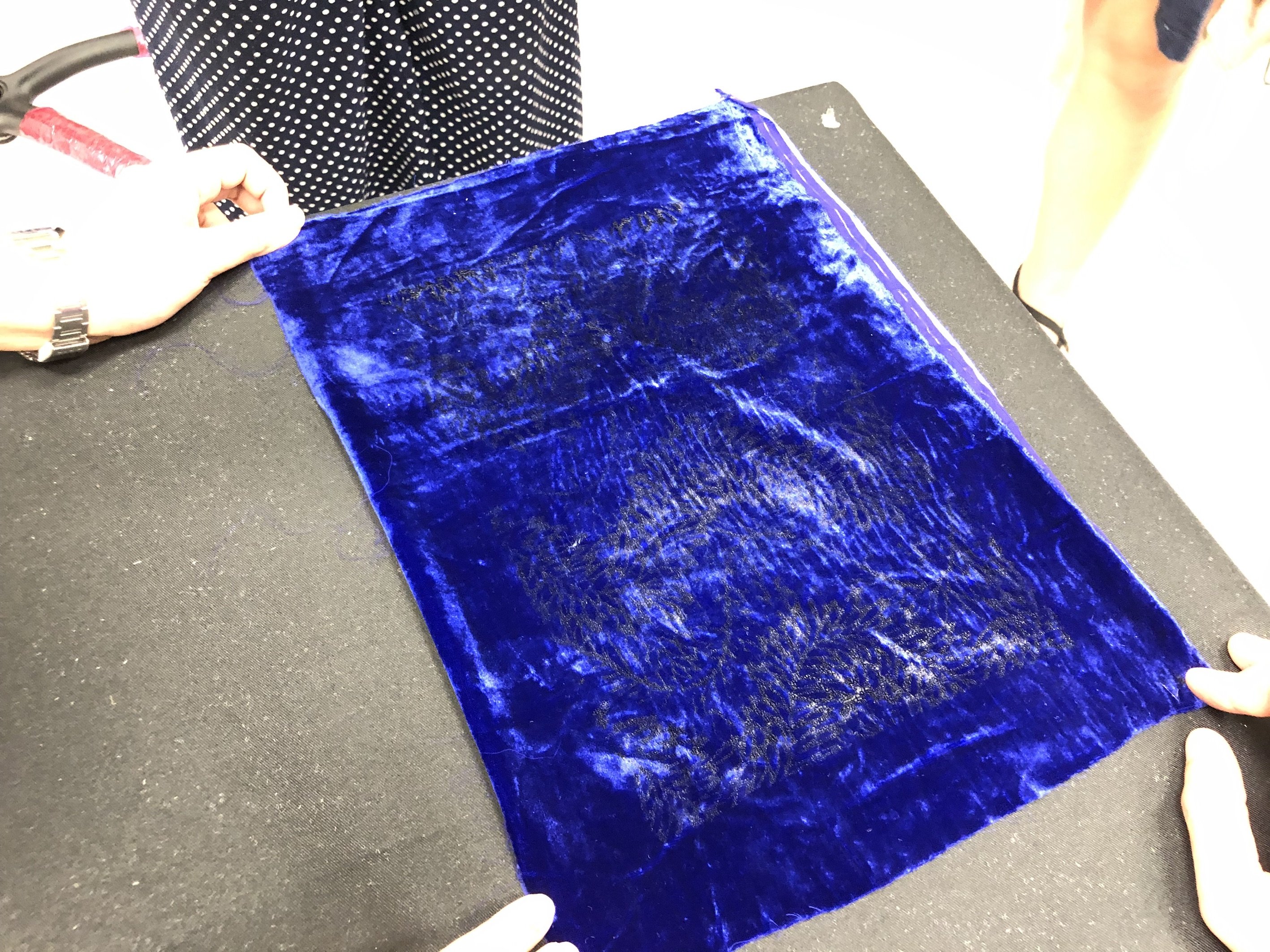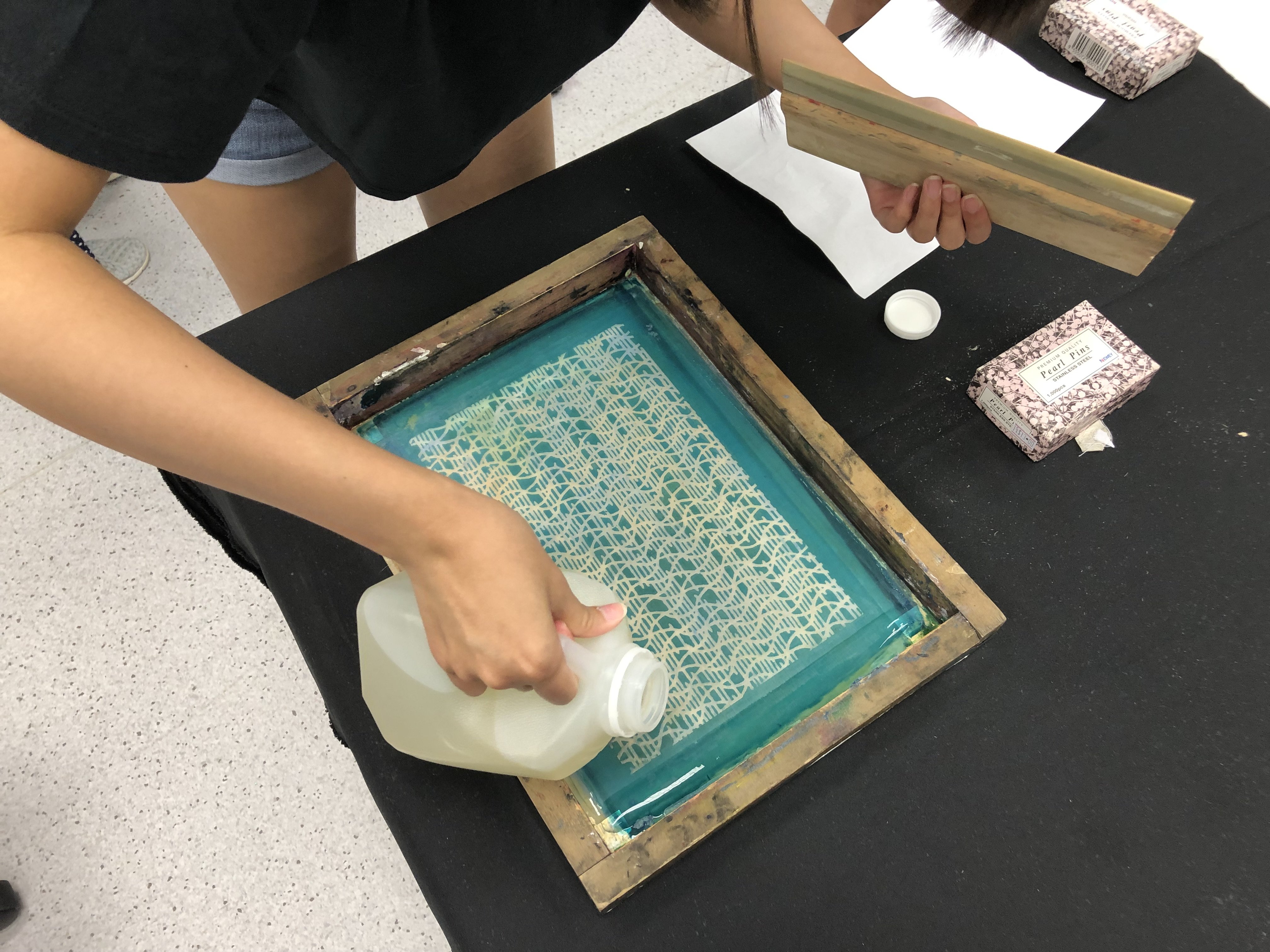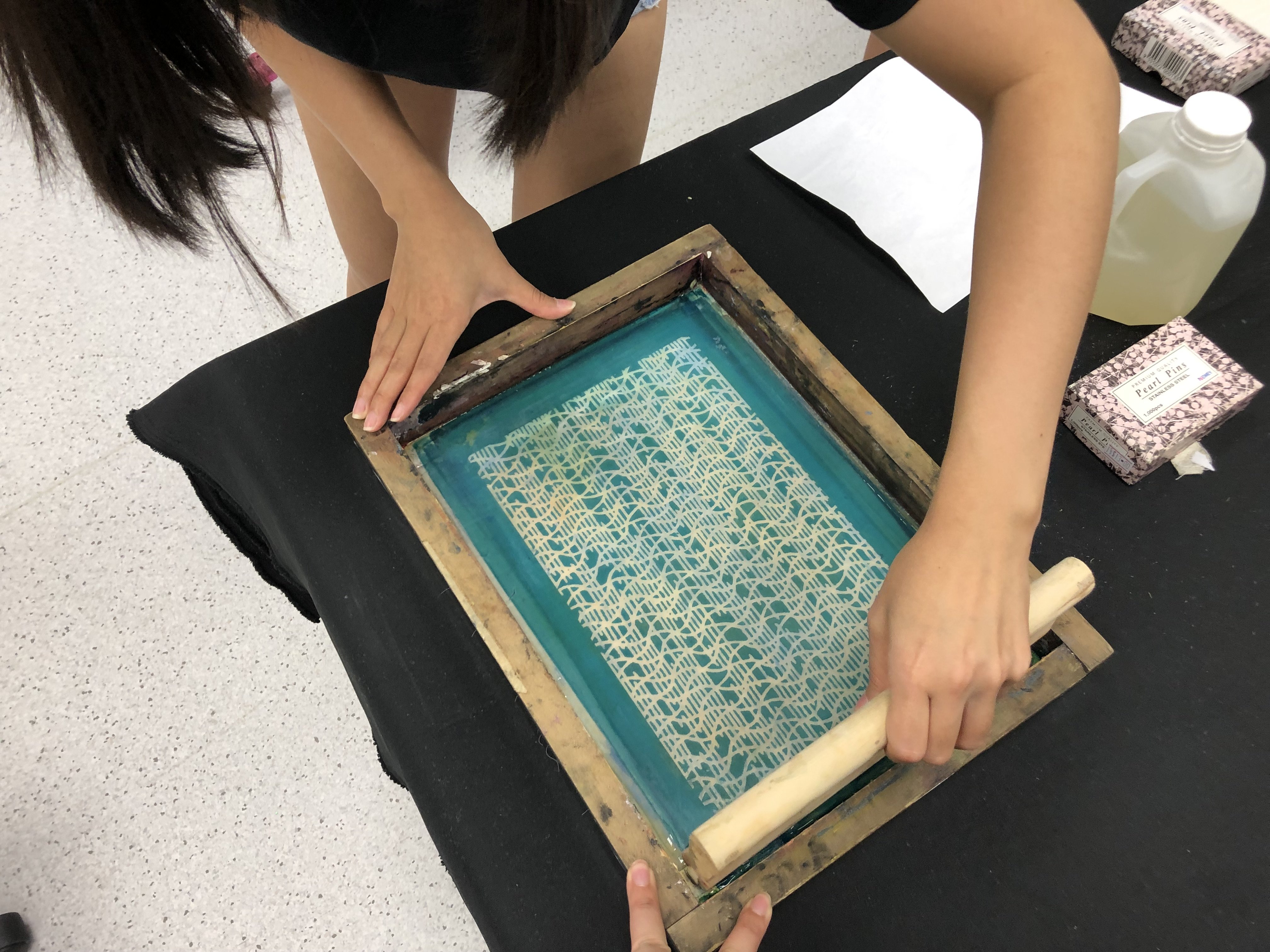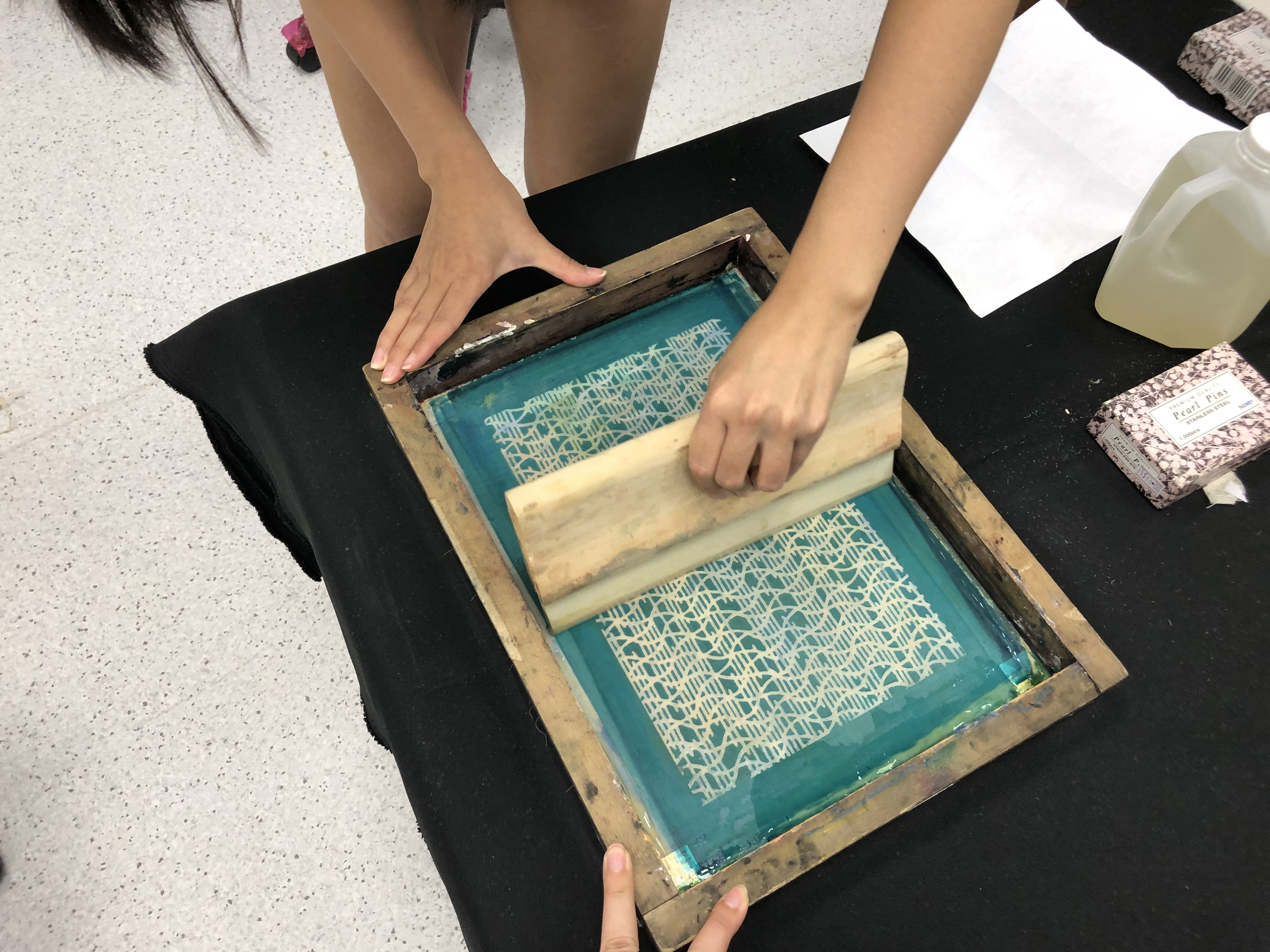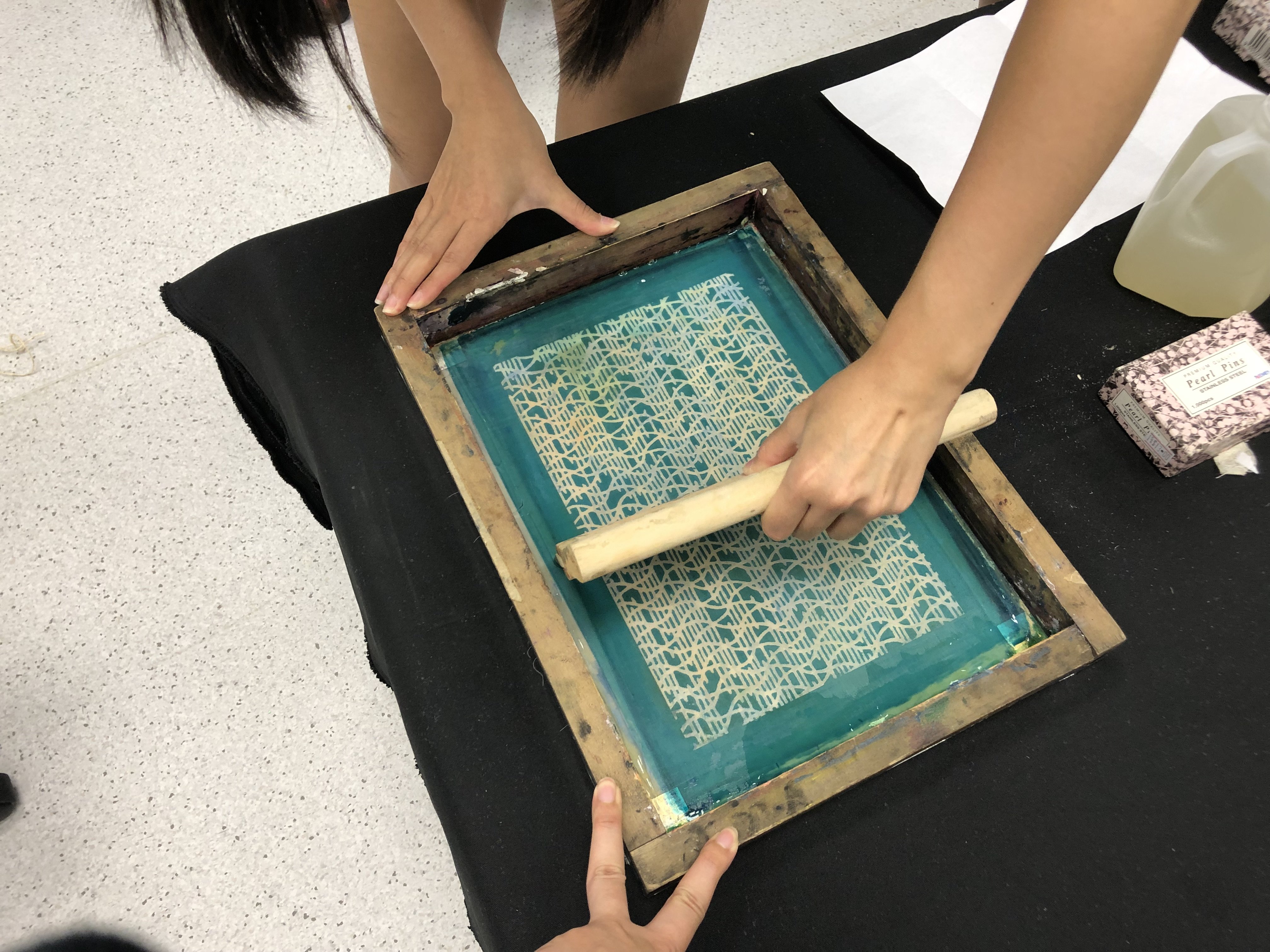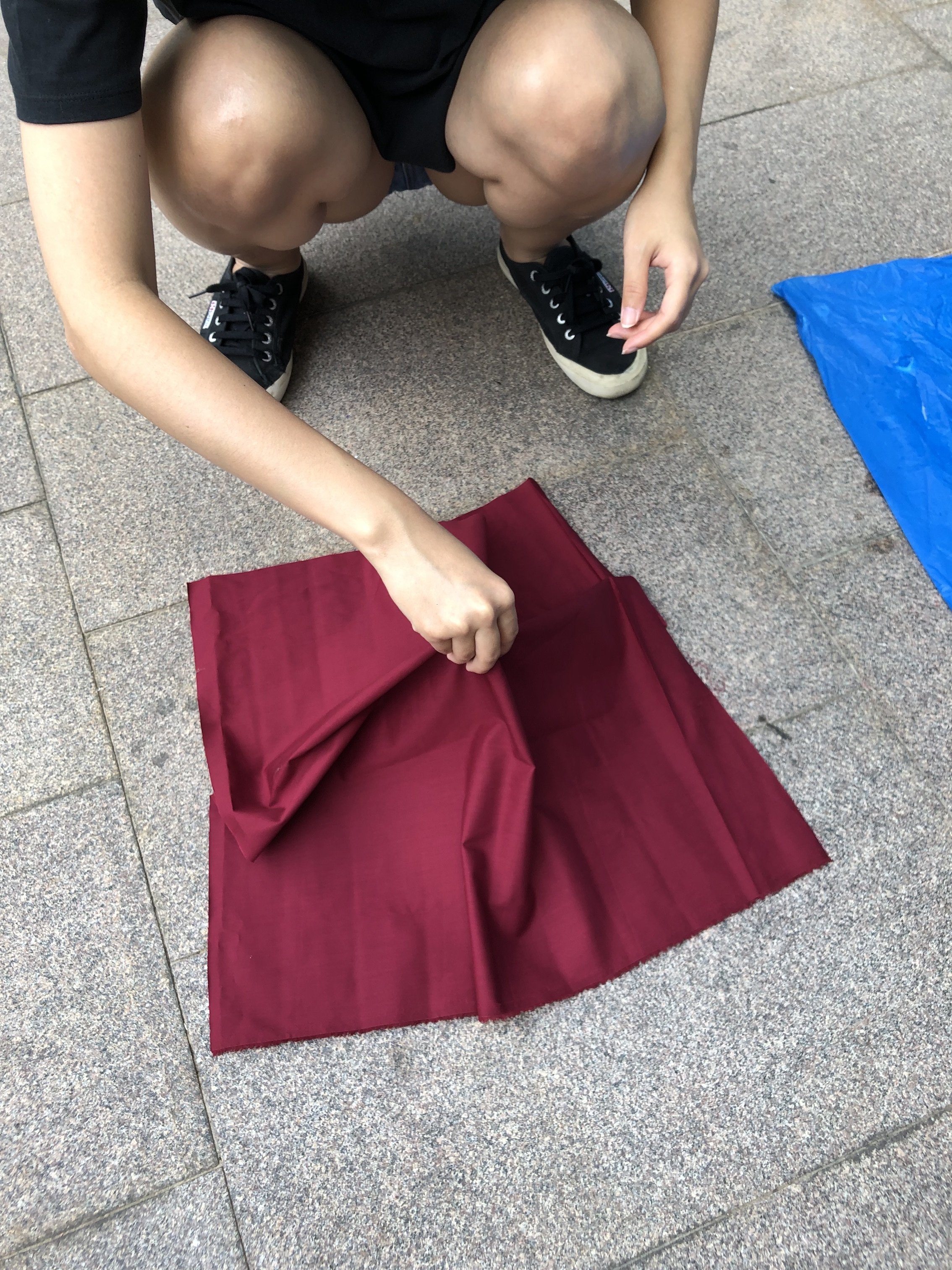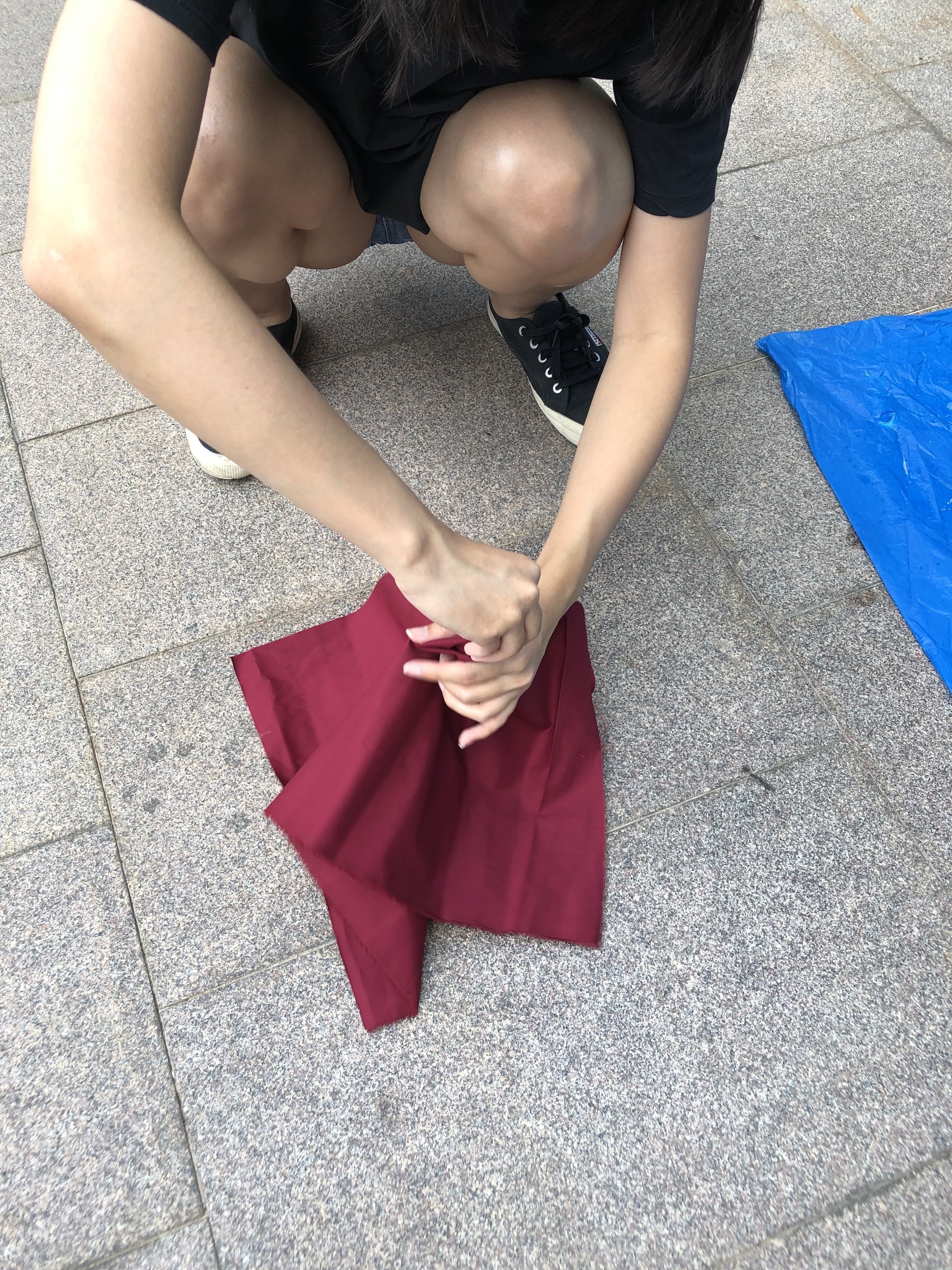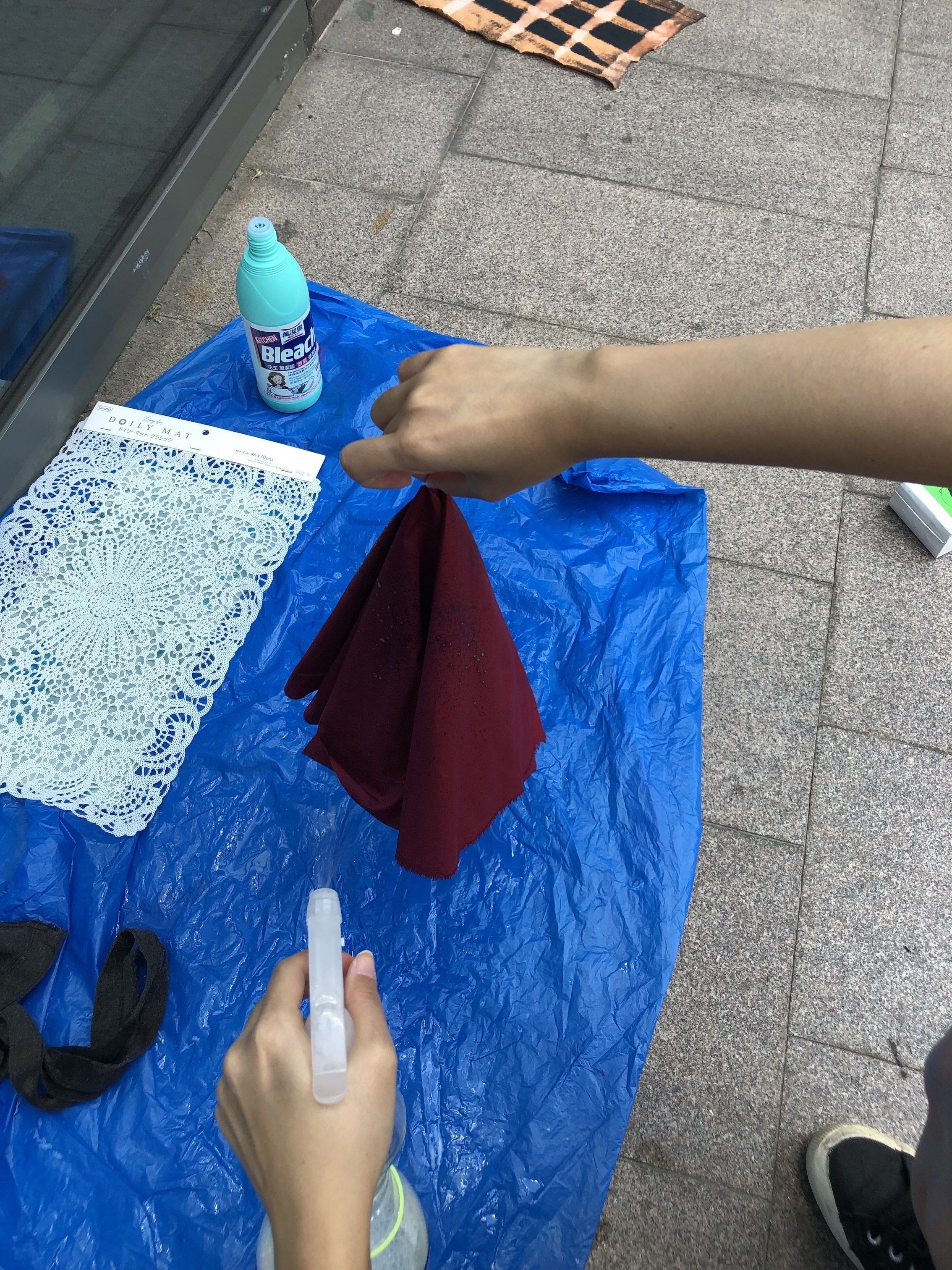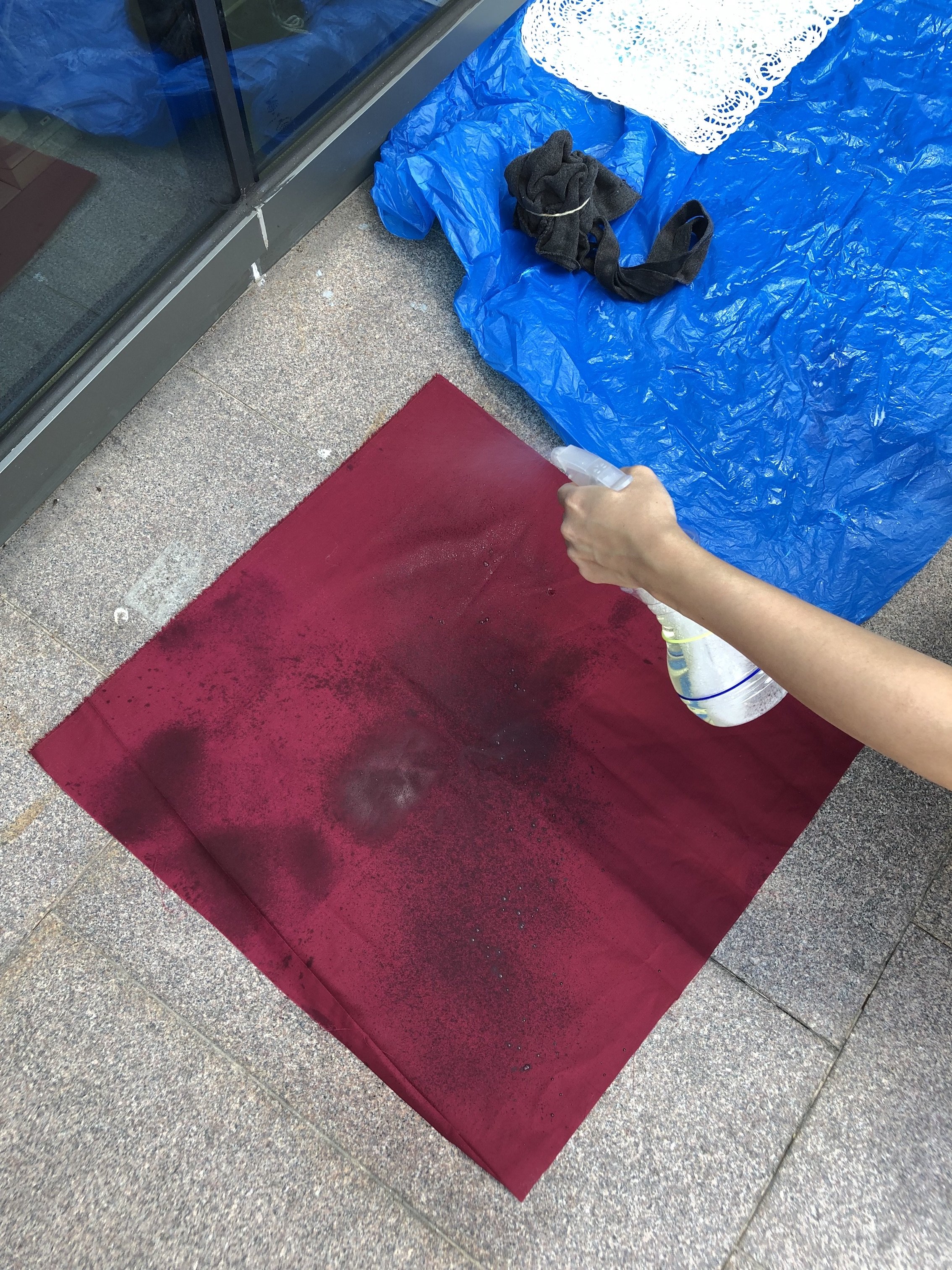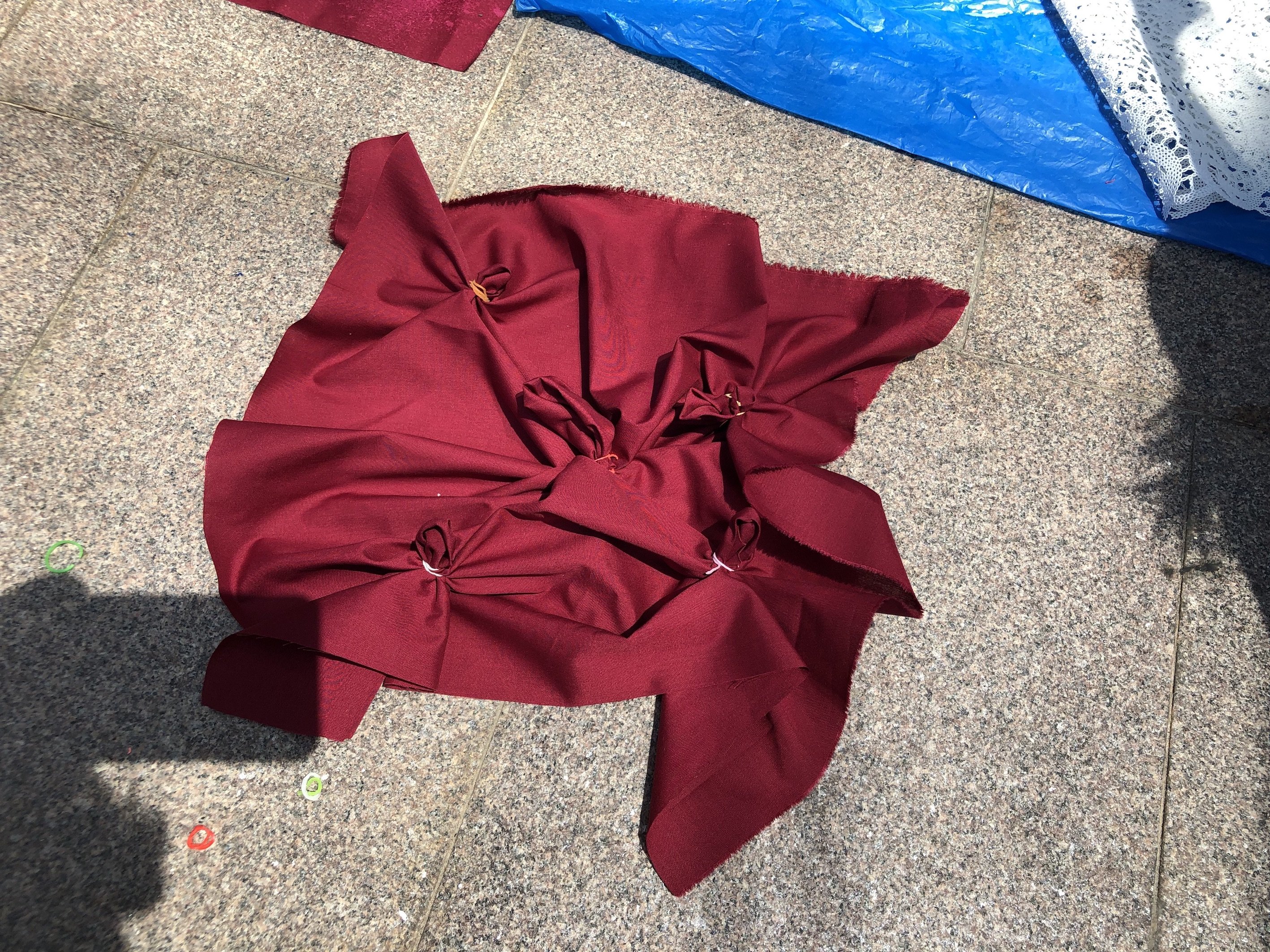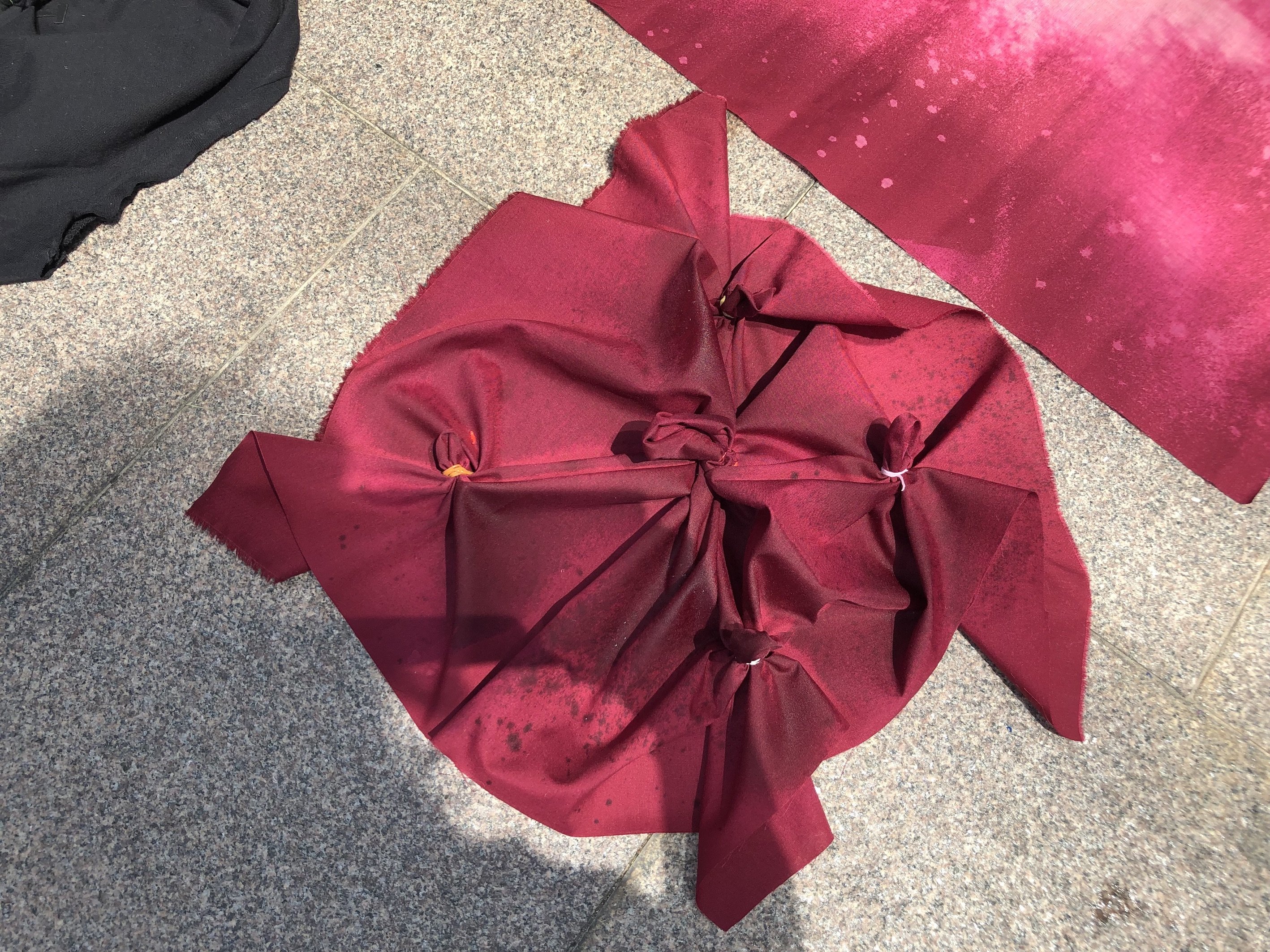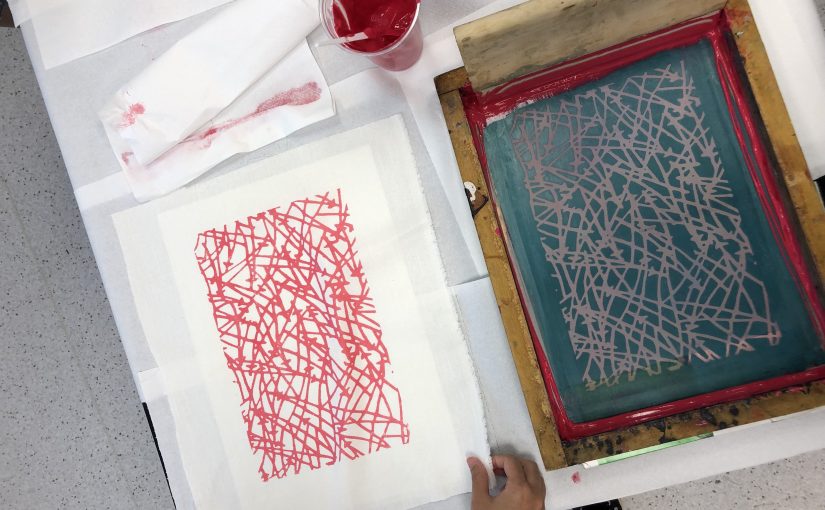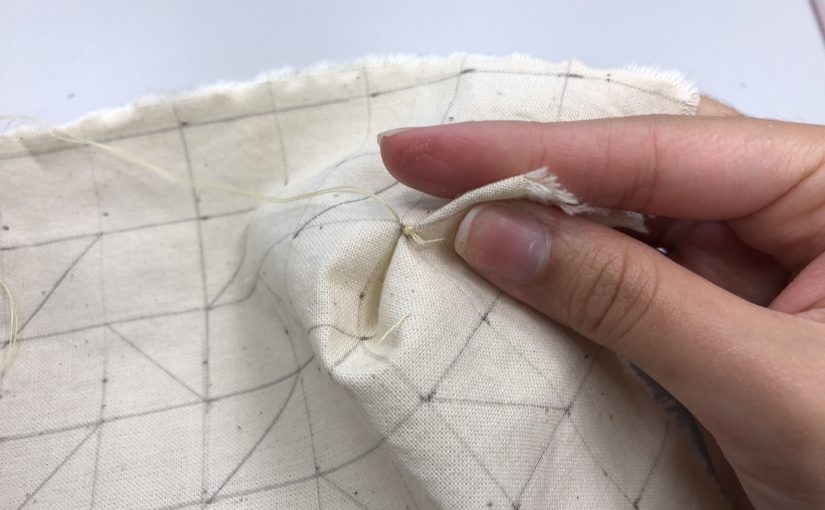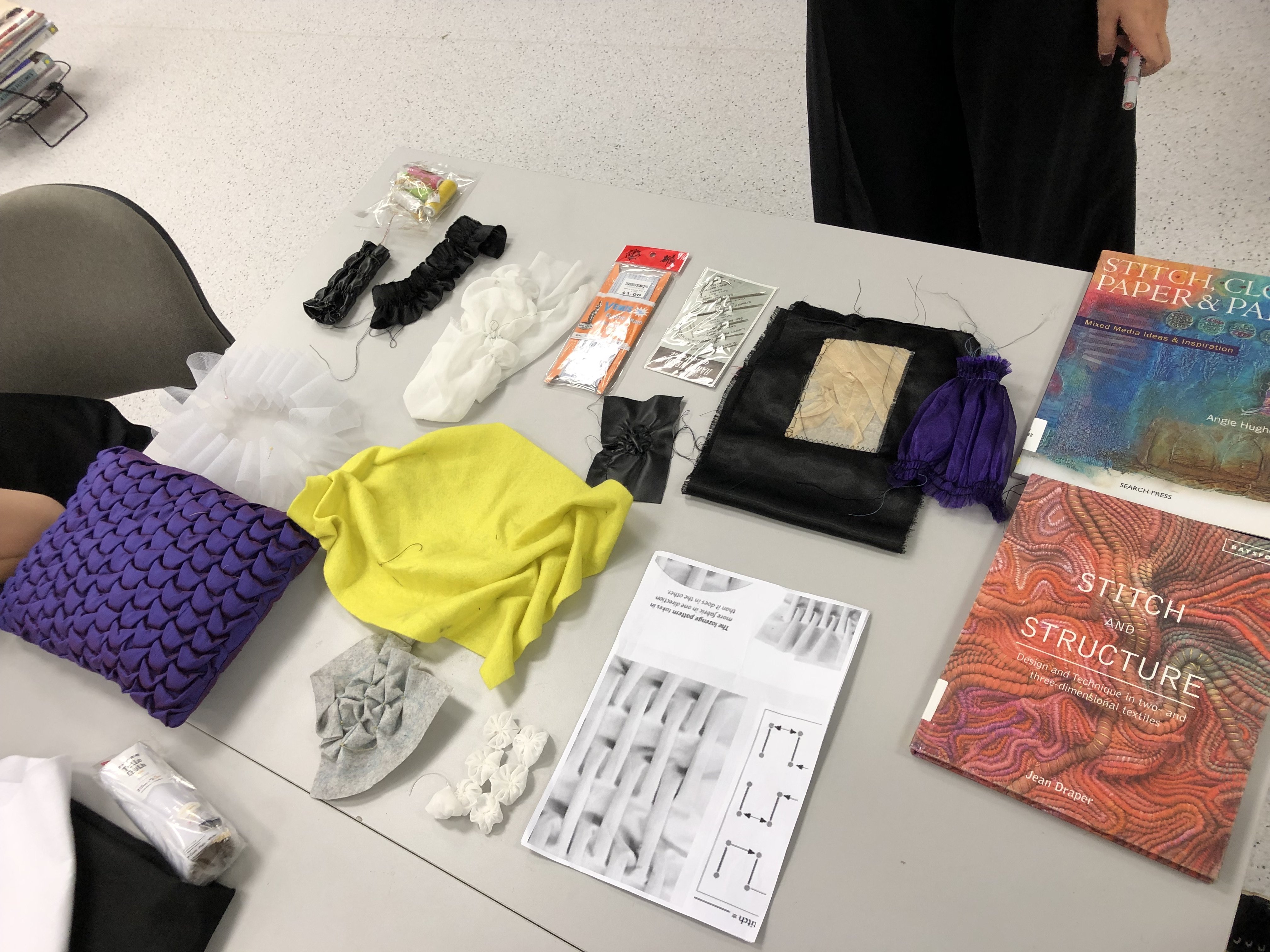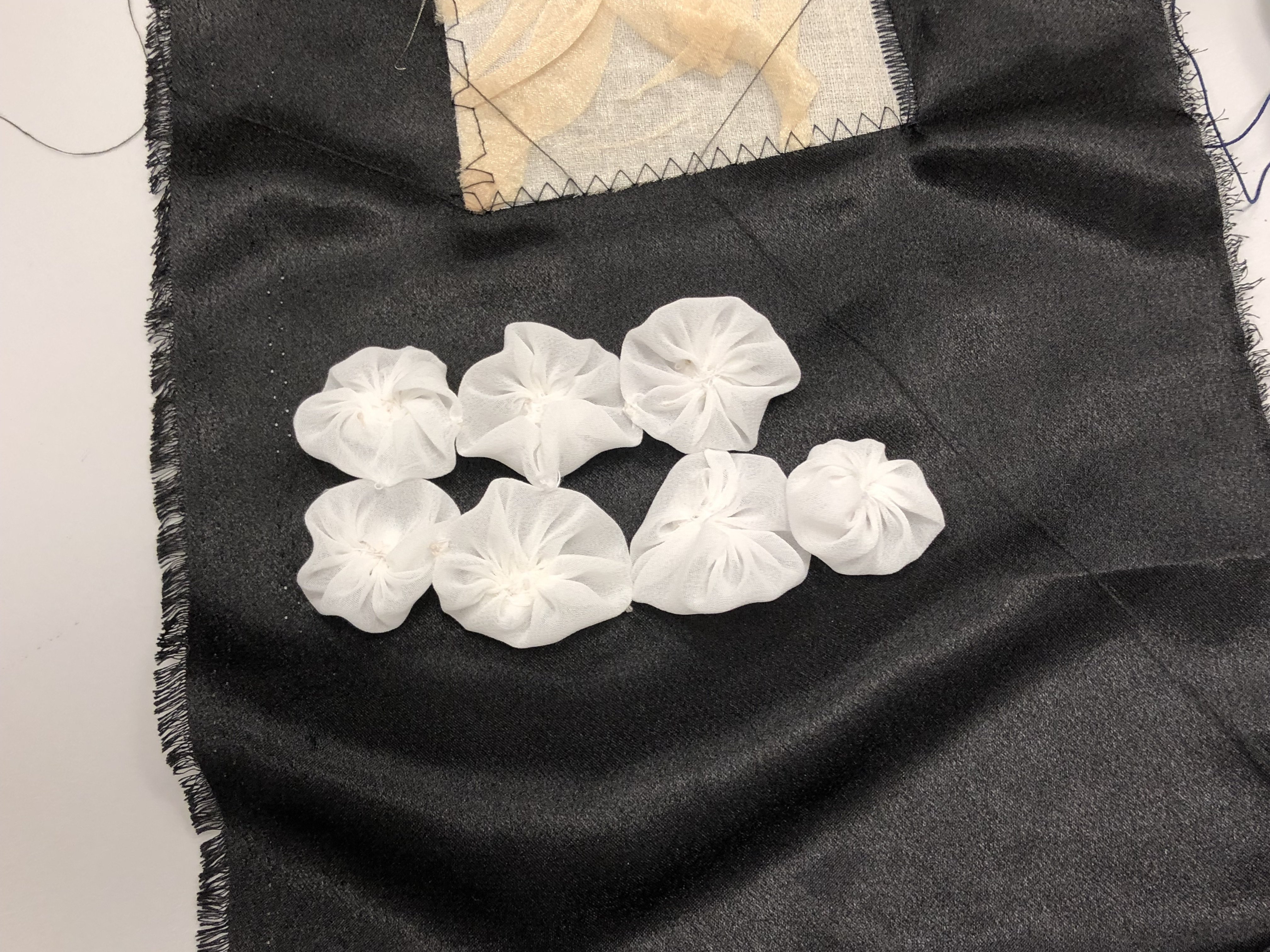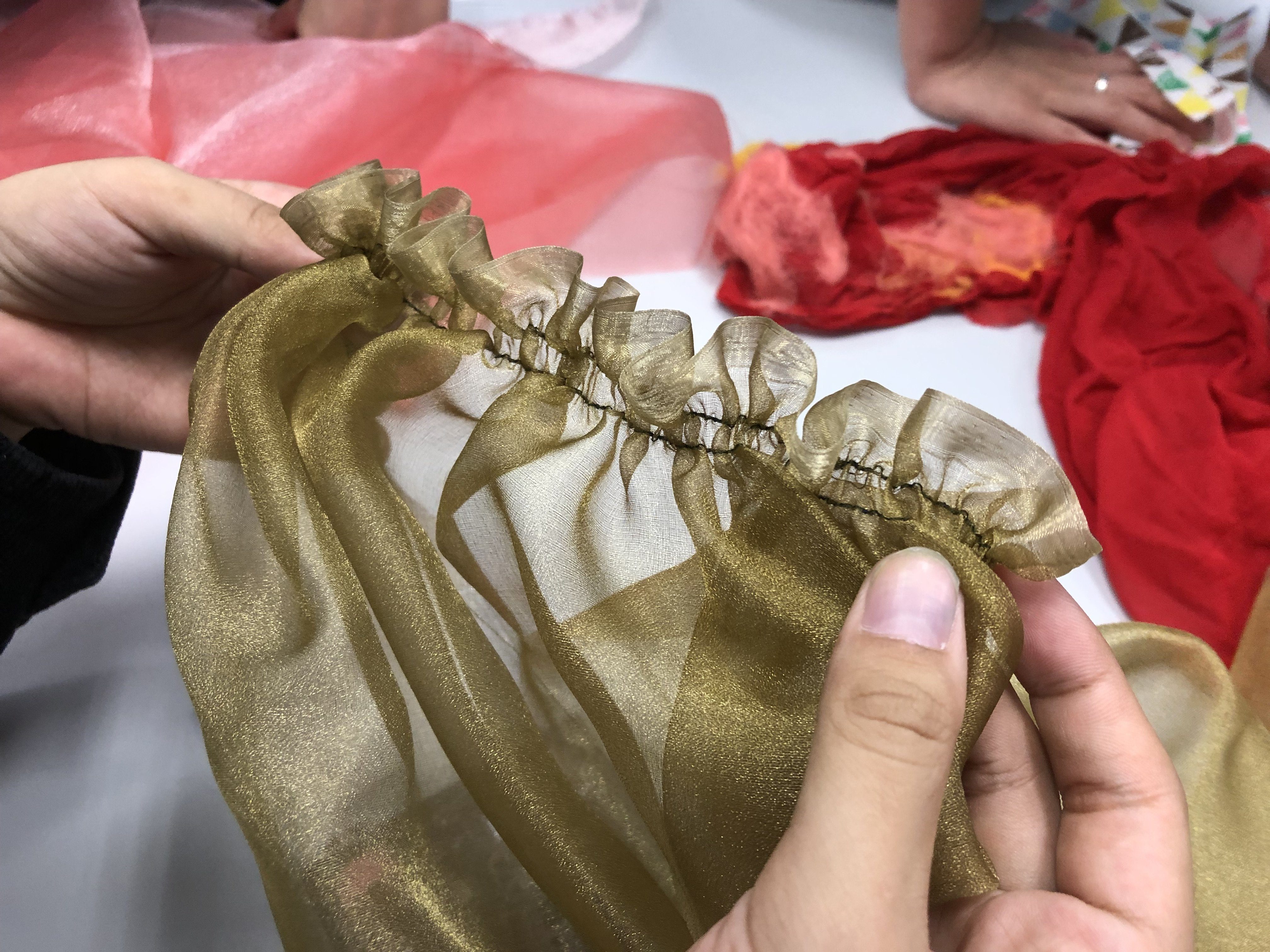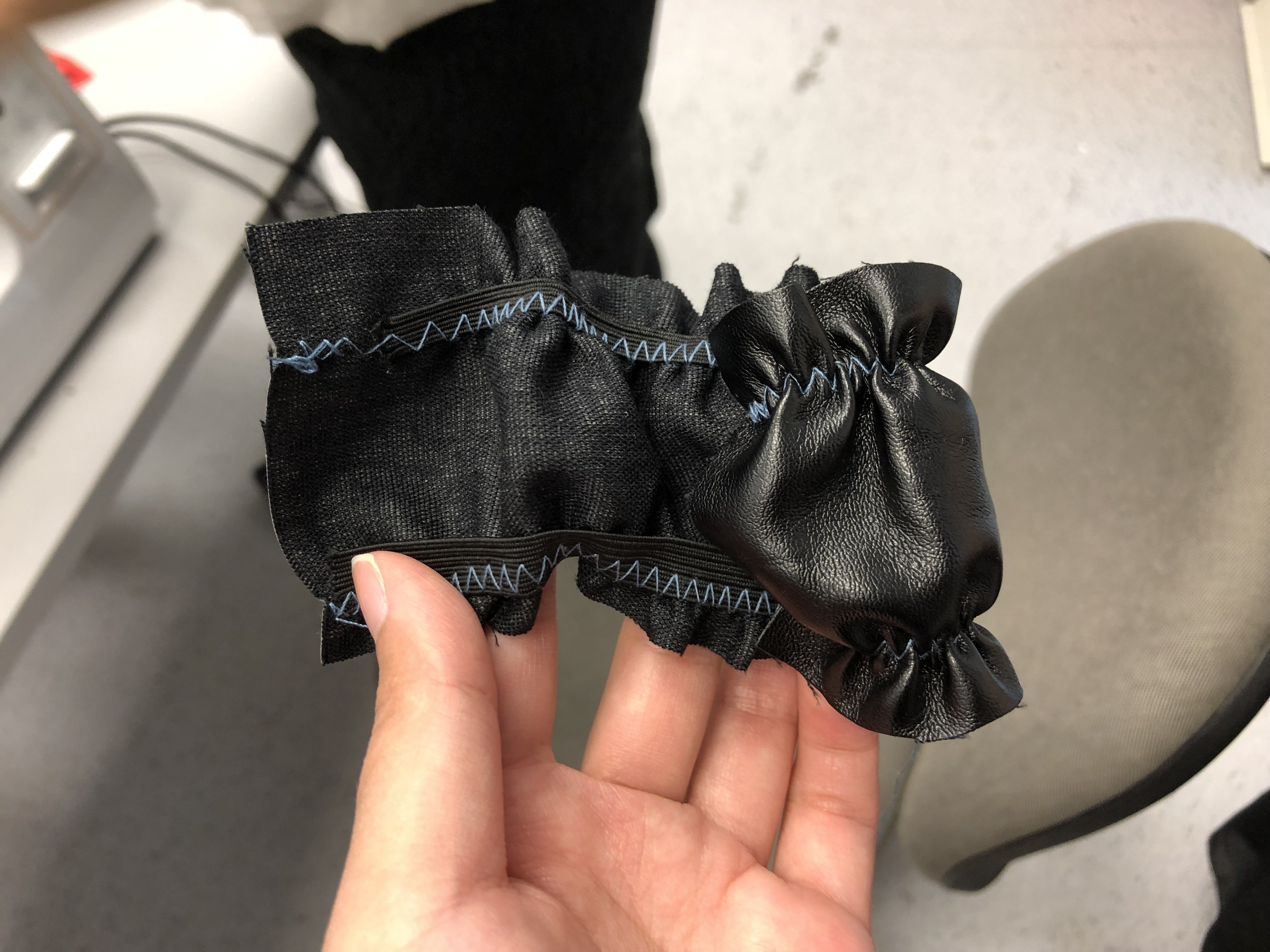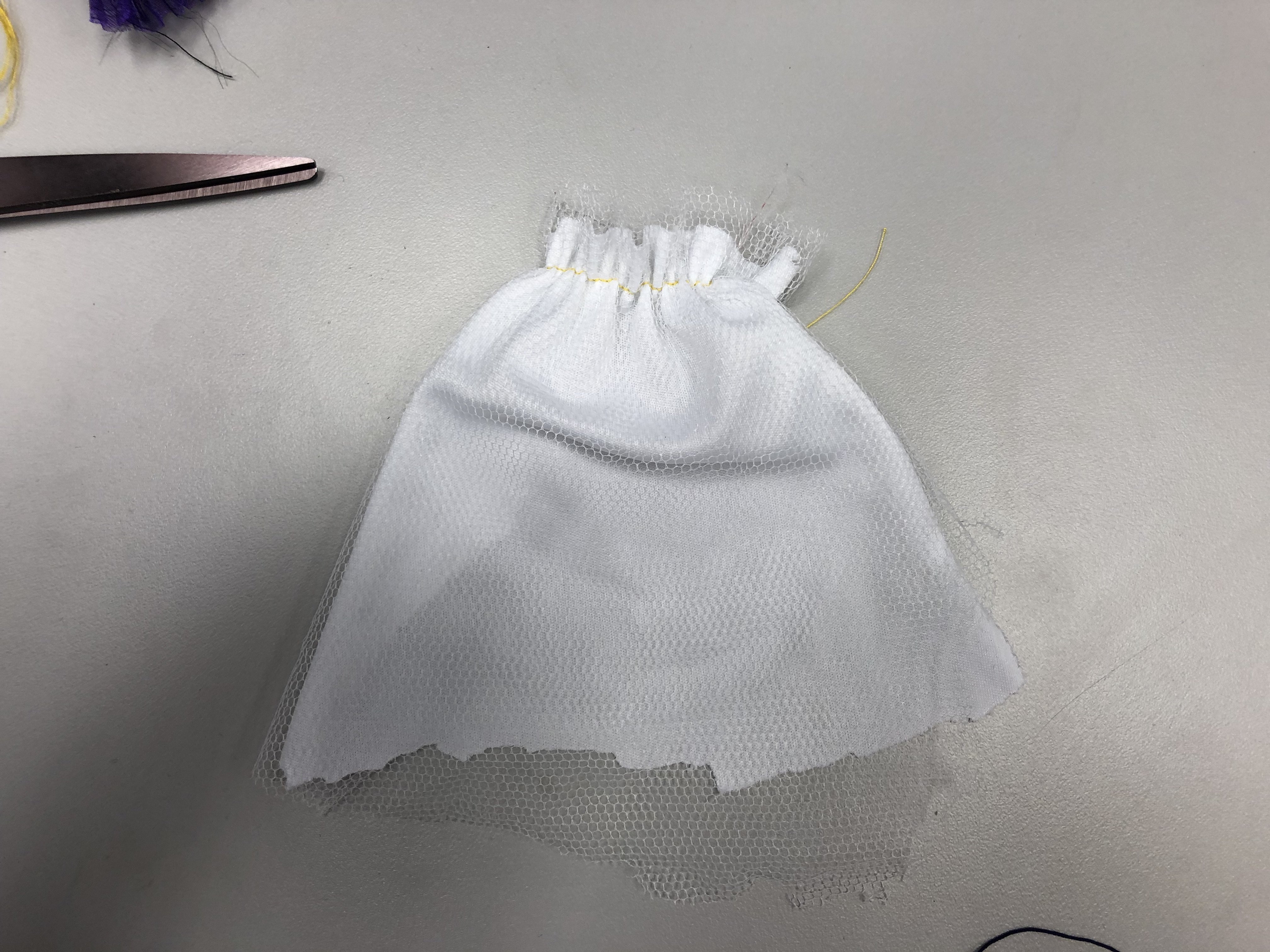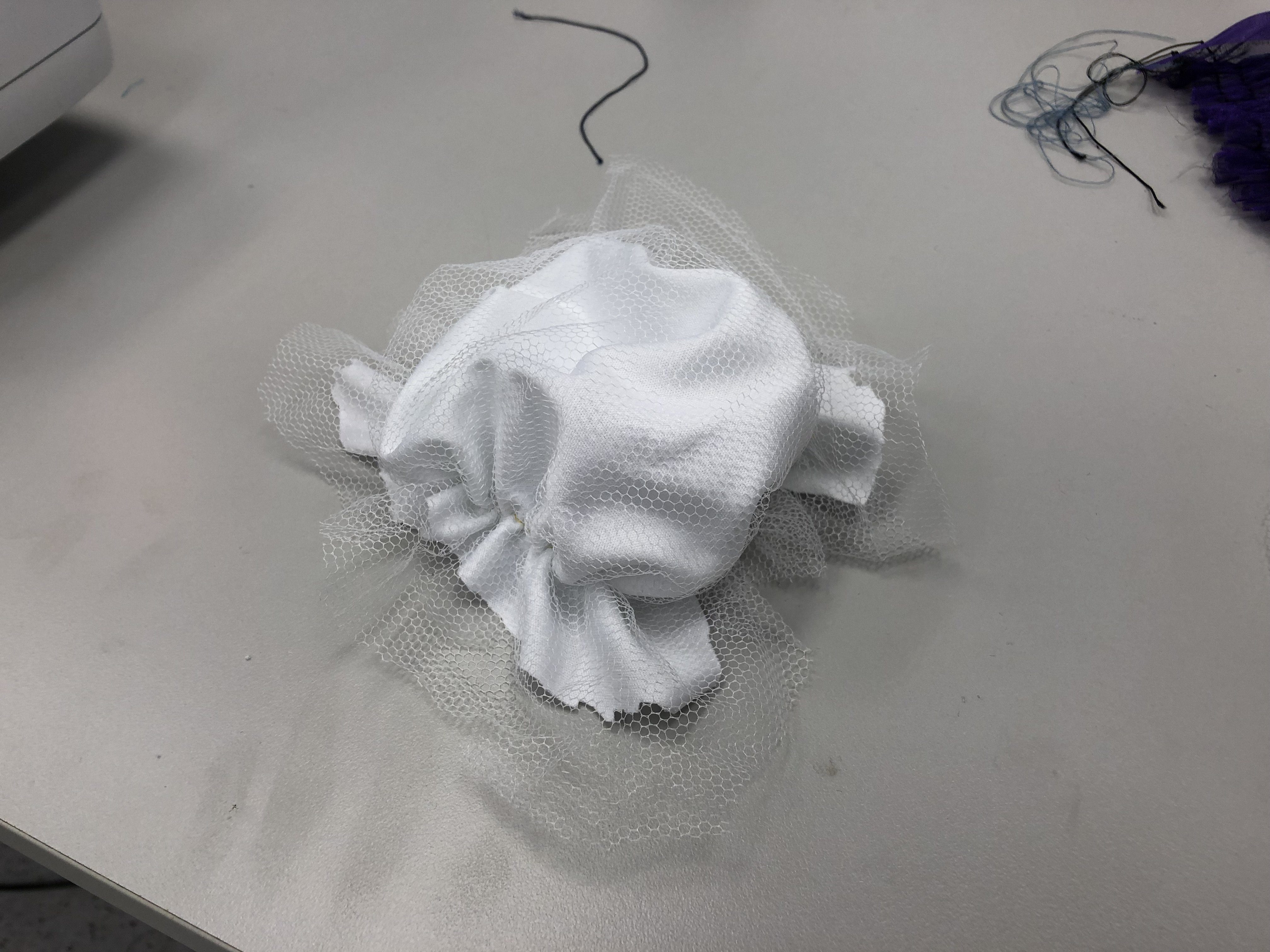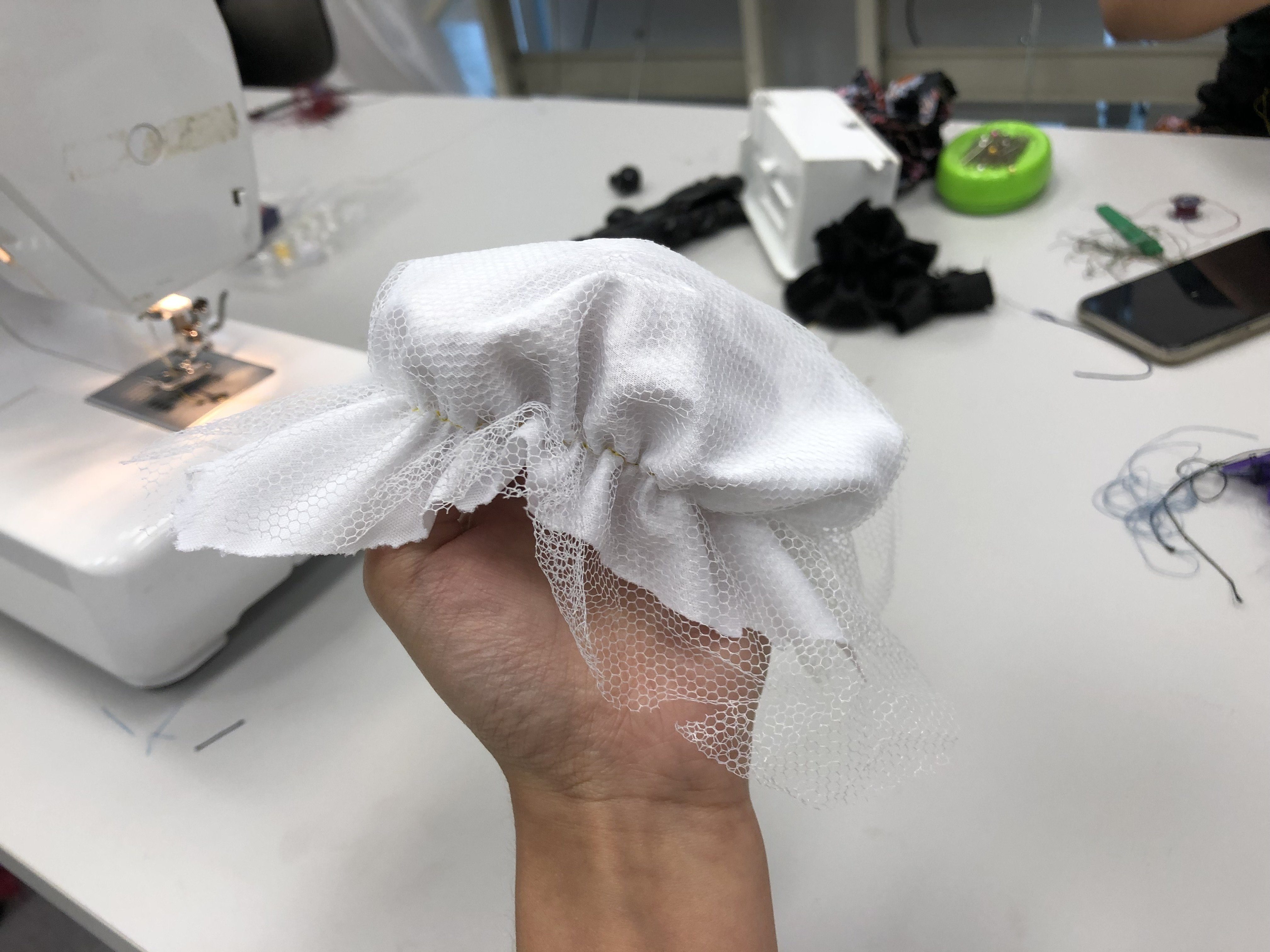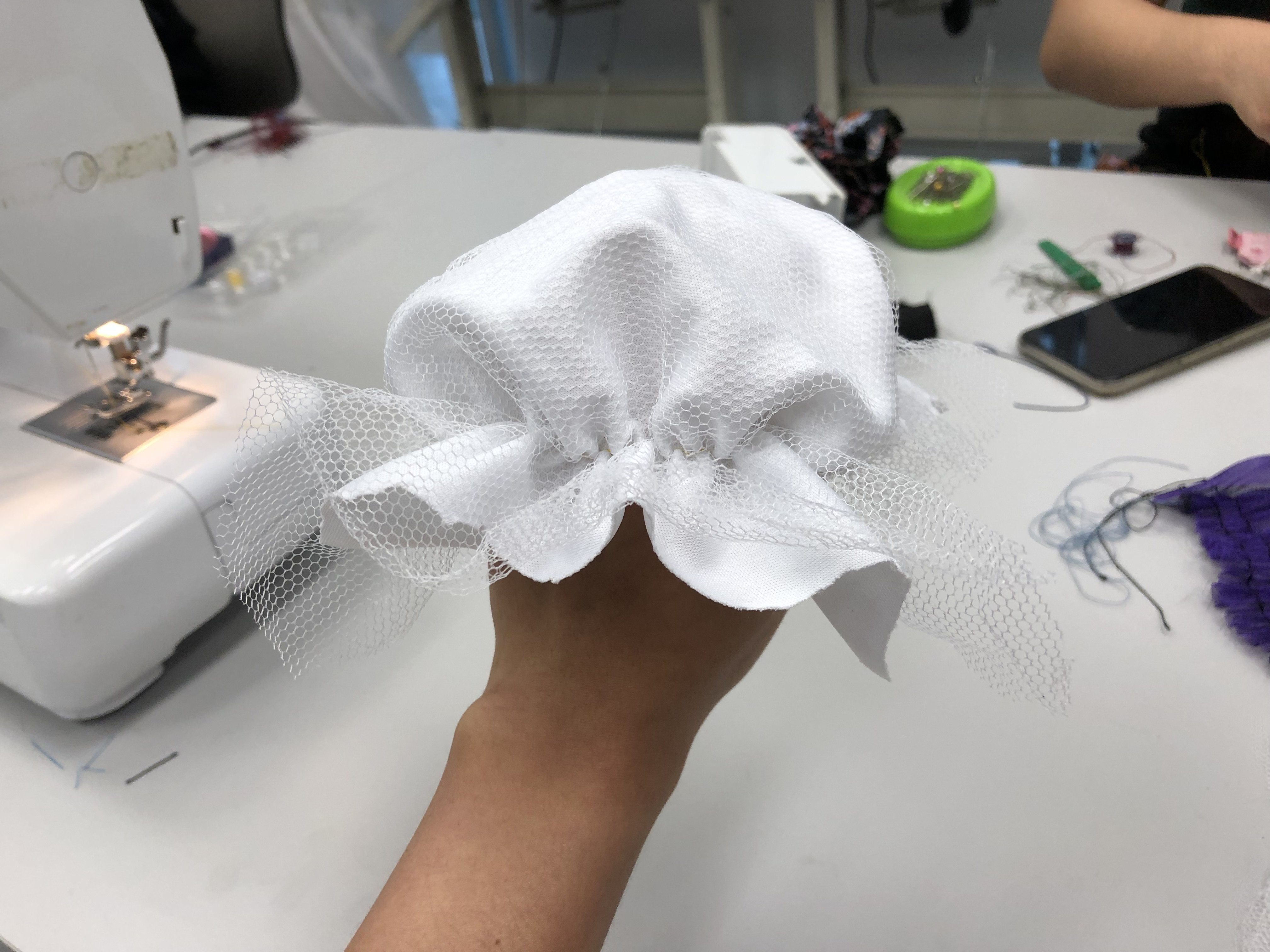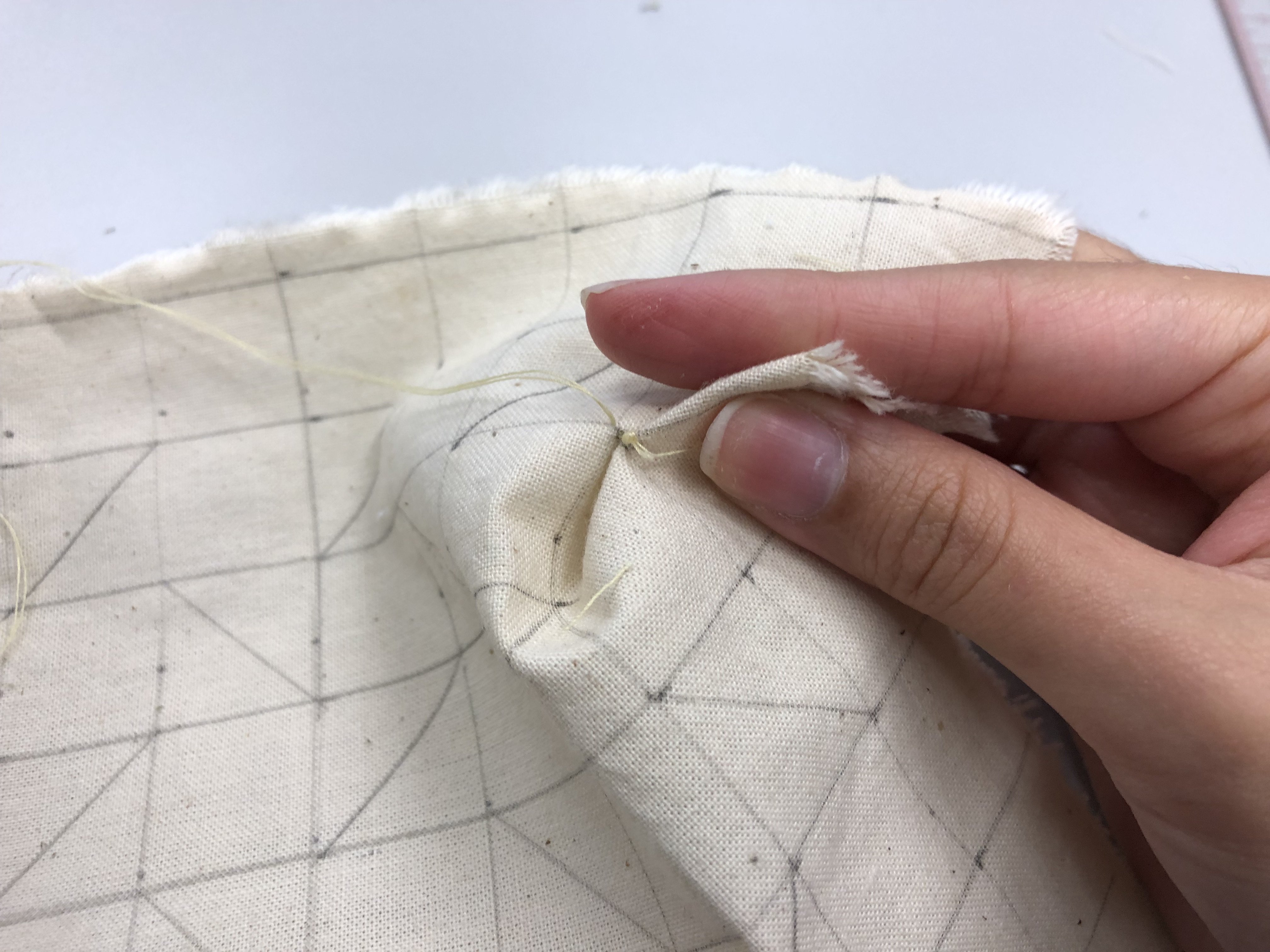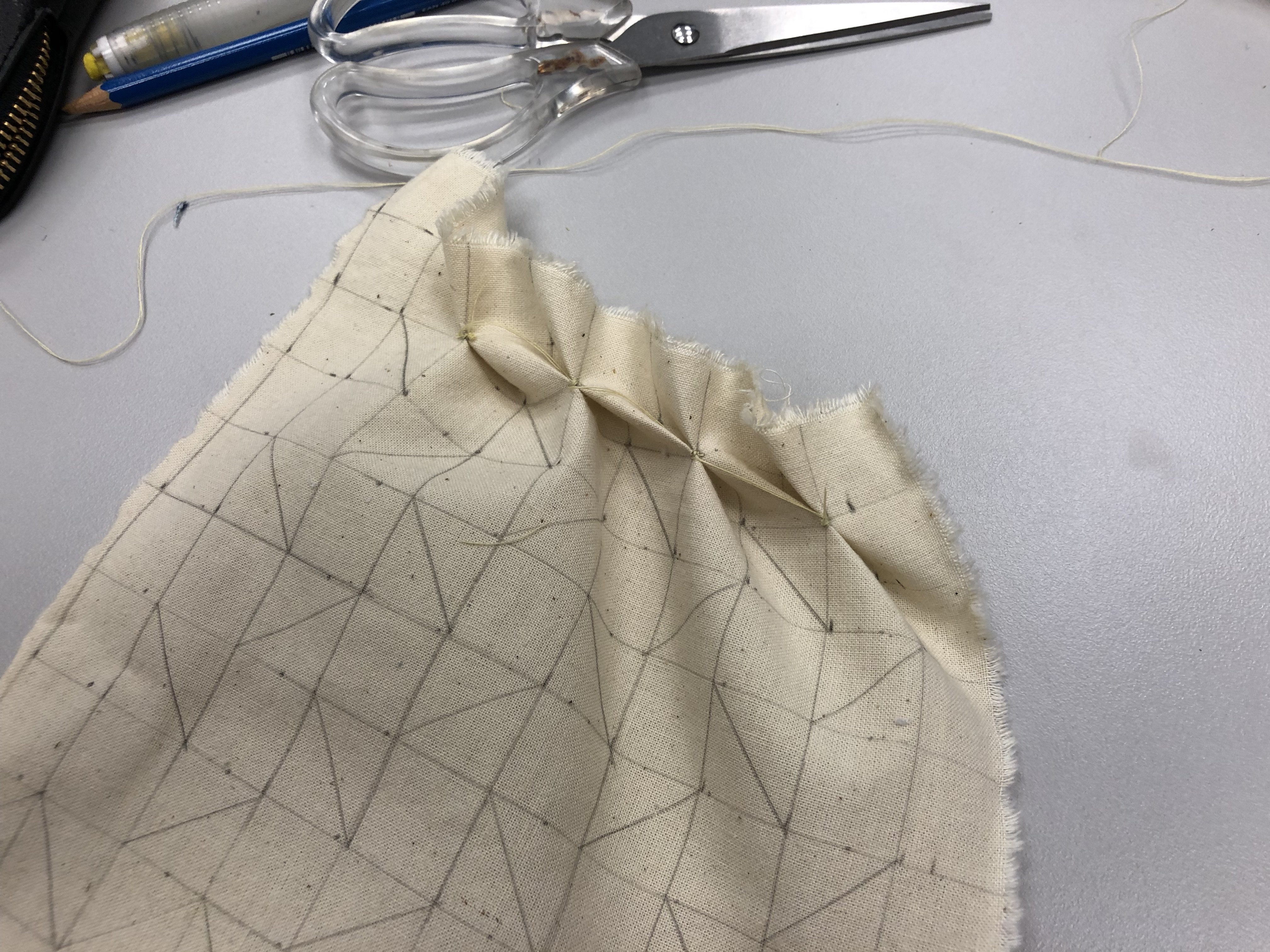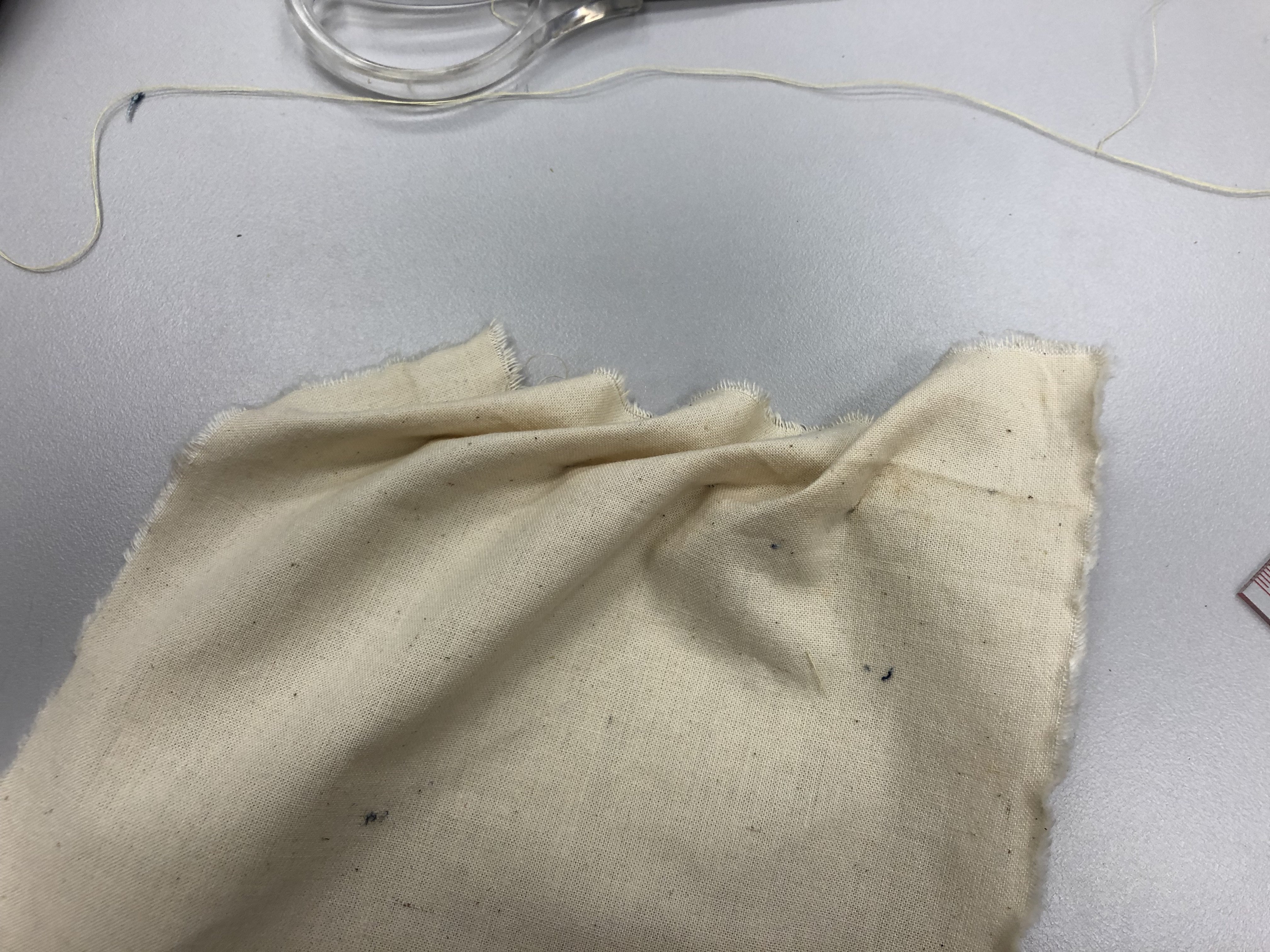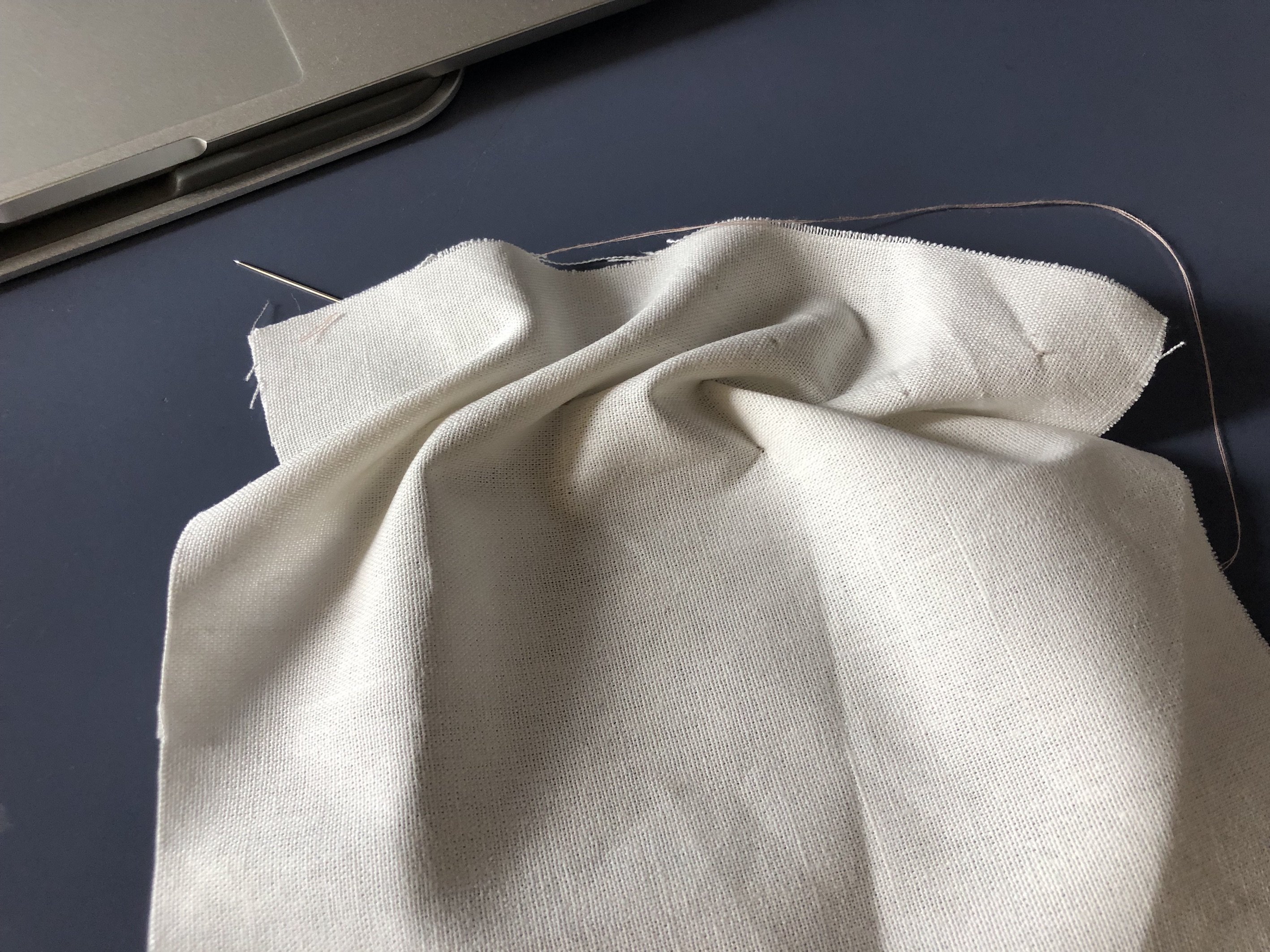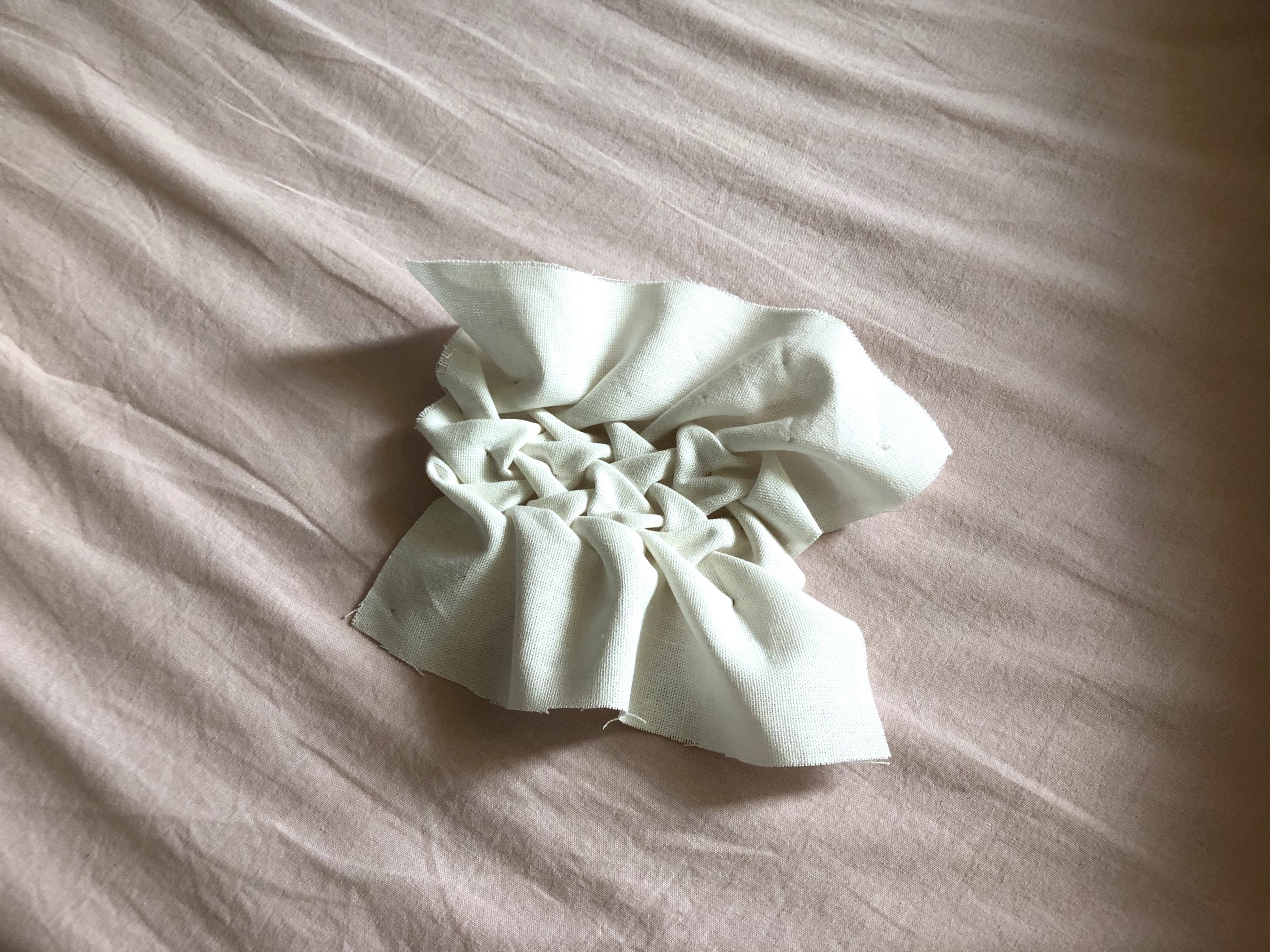
We are now at Week 8! Surface design is almost coming to an end. Today, we are playing with special inks, such as fiber etch and bleaching. Below is an awesome example of how fiber etching looks like! Basically it’s placing an etching liquid onto a velvet fabric to achieve such results.

Fiber Etching is commonly known as Devore. The technique works best on fabric blends that contain both cellulose and non-cellulose. The chemical in the etching liquid then “eats away” or “attacks” the cellulosic fibre, whereas the rest of the fabric which does not have the liquid applied will remain intact. The part of the cloth which is eaten away will thus create a pattern on the fabric.
Materials you’ll need:
Velvet fabric
Fiber Etch Remover Gel
Silkscreen pattern
Steps for Fiber Etching:
01 Place your velvet fabric, velvet side up
02 Prepare your silkscreen pattern and fiber etch gel
03 Place some of the gel onto the silkscreen and use a squeegee to apply the gel
04 The pattern will now be etched onto the fabric itself
05 Allow the fabric to dry thoroughly for 24 hours
06 Iron it the fabric until it turns yellowish-brown, then it’s time to etch it!
07 Keep rubbing / etching until your desired pattern shows up
08 Wash the fabric and let it dry
Now it’s my turn to start etching on my fabric!
Ok I realise that there’s no point in me posting the photo below as you can’t really see the etch part cos it’s too faint.

And also… it’s Saturday now and I actually forgot to collect my fabric…….. It has been sitting there since Tuesday…….. now I am very worried to see how my fabric has faired. *cries internally*
/ * U p d a t e
Finally managed to collect my etching fabric on Monday! I am SO glad it didn’t disintegrate and turn into dust (i’m kidding) after leaving the liquid on for so many days.
This is what it looks like originally.

As stated in the steps, we have to iron it until the fabric turns yellowish-brown. Initially, I did not iron it till it turns yellowish as I was afraid it will destroy my fabric. However, it was so difficult for me to rub off the etched fabric and nothing much seems to be dropping.


So, I finally tried to leave the iron on for awhile longer till one part of the fabric turns slightly yellowish. And indeed, it’s easier to remove the etched parts now.

I think it took me about 45 mins to finally remove all of the etched parts… I was using my fingertips to rub it off and I think my fingerprints went off with it hahaha.

And here is the final product!
The floral pattern fabric is much more clearer than the oriental one.

This was so difficult to remove! And I realise that this oriental piece eats up more fabric than the floral one. I guess the reason behind was that I ran through it twice while I was silkscreening the liquid onto the fabric. Whereas for the floral one I only went through it once. Too much liquid = less details

Overall this was a very interesting technique as now I knew how some those etched velvet clothes are manufactured. However, it’s really tedious! Now I understand why such patterns are so expensive as it requires it to be thoroughly handmade. The important lesson that I’ve learnt is, first, do not run the liquid over twice as it would make the pattern look smudgy. Secondly, iron till the fabric turns yellowish for easy removal of etched patterns.
Textile Bleaching
Bleaching is chemical treatment employed for the removal of natural coloring matter from the substrate. The source of natural color is organic compounds with conjugated double bonds , by doing chemical bleaching the discoloration takes place by the breaking the chromophore, most likely destroying the one or more double bonds with in this conjugated system. The material appears whiter after the bleaching.
Materials you’ll need:
Fibre-based fabric (eg. cotton)
Bleach
Water to dilute the bleach
Patterns if you need
Rubber bands
Steps for Bleaching:
01 Mix water and bleach and place it into a spray bottle
02 Tie/fold your fabric into a desired pattern that you want
03 I wanted to achieve a tie-dye effect, thus I used rubber bands and tied knots onto the fabric
04 Spray the bleach onto your fabric to create your desired pattern
05 Leave the sprayed fabric to dry for awhile.
06 Before your fabric turns into white, wash the bleach residue off your fabric to prevent the bleach from eating into the cotton as it will remove all the colours overtime

I used rubber bands to tie knots onto the fabric as I wanted to achieve a tie-dye effect. The only issue that I had was the bleach was in a spray container. As for tie-dye, the fabric is normally soaked into the paint itself. I was wondering on how do I not make it look like “splotches” of paint.
Leaving all of my fabrics to dry in the sun.

Here are the final results:

I guess I spray too much for this hehe.

This is my favourite among the 3 fabrics! I love the effect hehe

Overall, bleaching was really fun! It’s interesting how I could create similar tie-dye effect simply by using bleach, rather than paints. Such a simple household item could also be use to create art! Now I’m so tempted to make my own tie-dye bleached shirt, and not having to purchase those tees at overpriced prices :p
L a s e r & R a s t e r i n g

Raster is the standard process for engraving. It works like an inkject printer, where a file is printed line by line. Instead of printing, it engraves on the material. Laser cutting is basically cutting the wood accordingly to your vector file.
Raster Engraving
01 Create your vector file. Note that outlines are for laser cutting and fill are for rastering
02 Place your file into Coreldraw
03 Set the suitable settings for your engraving / laser cutting. You are able to control the depth of the rastering according to the power set in the print settings
04 Place your material in the machine. It could be wood or acrylic
05 Start rastering!

I knew I wanted to make mini coasters with this process. Rather than using a circular shape, I tried an octagon shaped coaster and used geometrical shapes to stylize the minimalistic look. And below are the final outcome! I was very satisfied with the look hehe.



I wanted to add a different texture for the coaster below. It’s an image that mimics a sunset. It was interesting to see that the darker raster at the back has a grid-like texture as compared to the rest.




Overall it was an interesting experience! I had previous experiences with laser-cutting but has never tried rastering. Now I finally have a chance to try it and it’s really cool! It opens up more doors of opportunities for me now hahaha. I’m excited to try this for my future projects.


















